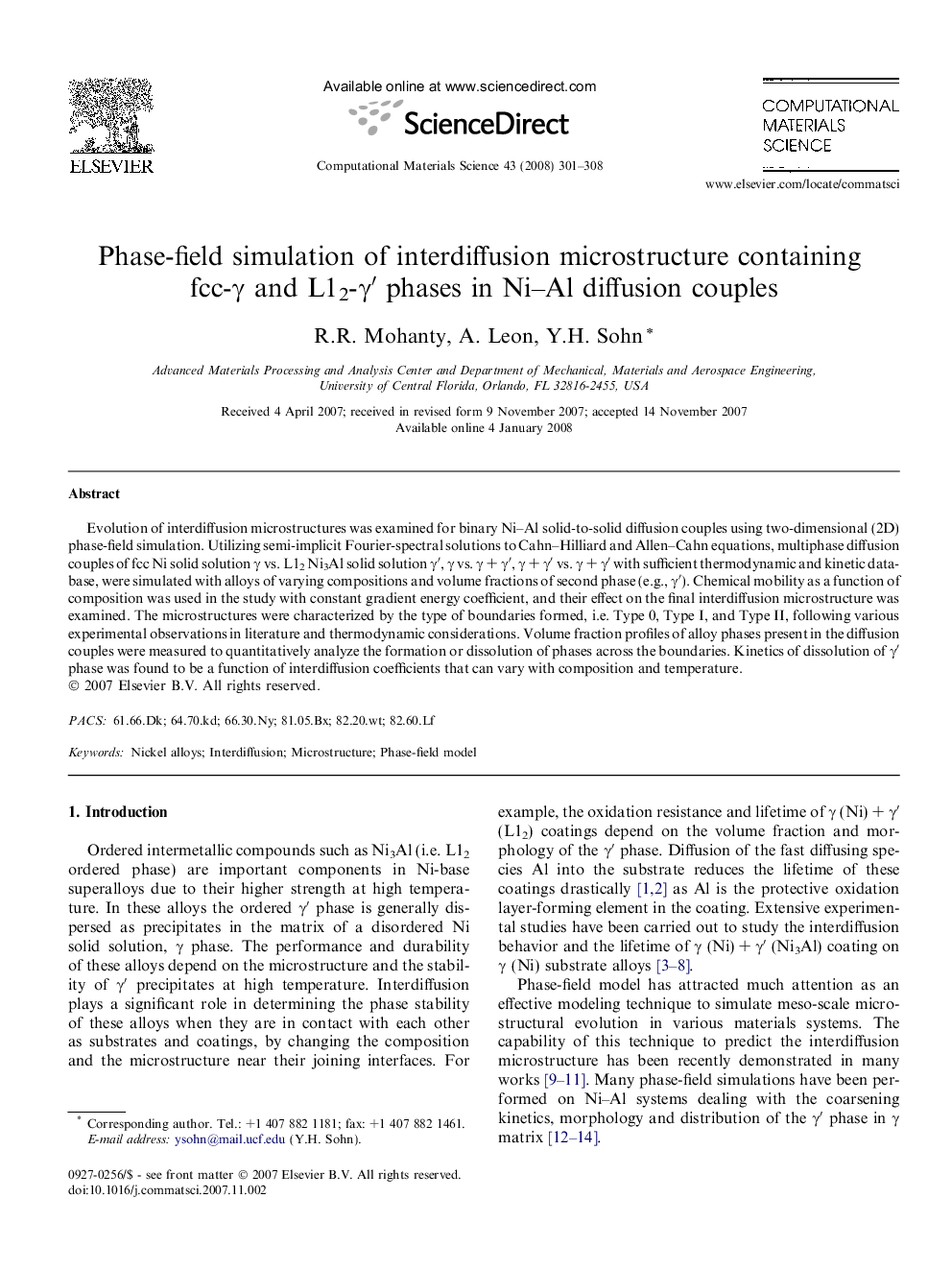| Article ID | Journal | Published Year | Pages | File Type |
|---|---|---|---|---|
| 1563603 | Computational Materials Science | 2008 | 8 Pages |
Evolution of interdiffusion microstructures was examined for binary Ni–Al solid-to-solid diffusion couples using two-dimensional (2D) phase-field simulation. Utilizing semi-implicit Fourier-spectral solutions to Cahn–Hilliard and Allen–Cahn equations, multiphase diffusion couples of fcc Ni solid solution γ vs. L12 Ni3Al solid solution γ′, γ vs. γ + γ′, γ + γ′ vs. γ + γ′ with sufficient thermodynamic and kinetic database, were simulated with alloys of varying compositions and volume fractions of second phase (e.g., γ′). Chemical mobility as a function of composition was used in the study with constant gradient energy coefficient, and their effect on the final interdiffusion microstructure was examined. The microstructures were characterized by the type of boundaries formed, i.e. Type 0, Type I, and Type II, following various experimental observations in literature and thermodynamic considerations. Volume fraction profiles of alloy phases present in the diffusion couples were measured to quantitatively analyze the formation or dissolution of phases across the boundaries. Kinetics of dissolution of γ′ phase was found to be a function of interdiffusion coefficients that can vary with composition and temperature.
